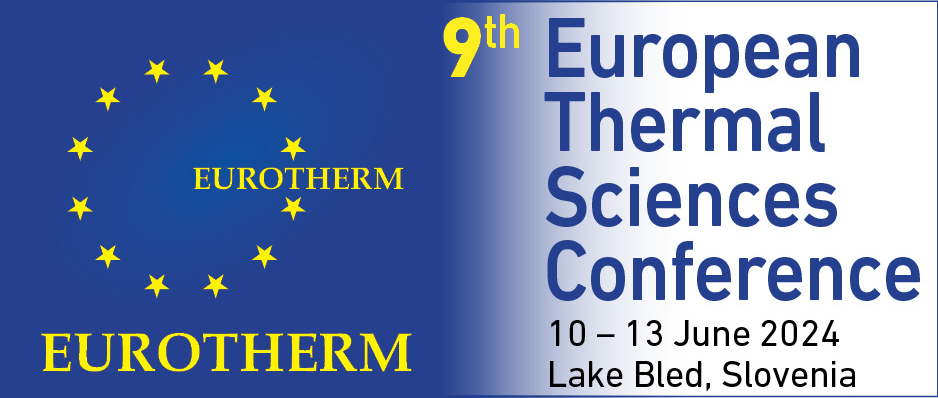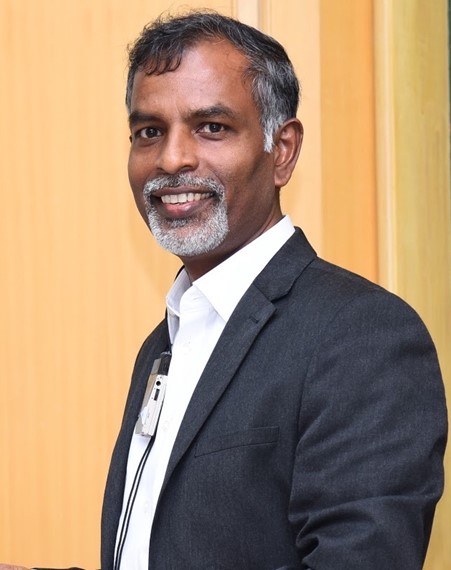Digital twins of thermal systems
Perumal Nithiarasu
Recent strides in artificial intelligence (AI) have brought about transformative changes across various engineering domains, particularly manufacturing and healthcare [1]. This impact extends to thermal sciences, where machine and deep learning integration is becoming increasingly prevalent [2]. This lecture aims to provide an insightful overview of the current state of the art in AI applications within thermal engineering, focusing on the emerging realm of digital twins.
Digital twinning, defined as a virtual platform where a physical entity and its digital counterpart continually influence each other until achieving a desired outcome, presents distinct challenges. In thermal sciences, where measurements are often sparse and prone to noise, the first significant challenge lies in integrating this sparse data into physics-based models to reconstruct a comprehensive solution [4].
The lecture will address this challenge's intricacies, emphasising the need for accurate reconstruction models. Even if such models are feasible, they often are not cost-intensive and real-time solution reconstruction is a challenge. For digital twins to effectively control physical entities, especially in extreme thermal environments, nearly real-time transient solution reconstruction becomes imperative [5].
1. N.K. Chakshu and P. Nithiarasu, An AI based digital-twin for prioritising pneumonia patient treatment, IMECHE Journal – Part H, 236,1662-1674, 2022.
2. W. Bielajewa, M. Tindall and P. Nithiarasu, Comparative study of transformer- and LSTM-based machine learning methods for transient thermal field reconstruction, Computational Thermal Sciences: An International Journal, (2024).
3. A Di Meglio, N. Massarotti and P. Nithiarasu, A physics-driven and machine learning-based digital twinning approach to transient thermal systems, International Journal of Numerical Methods for Heat & Fluid Flow, (2024).
4. H.T.Jahromi, N.K.Chakshu, I. Sazonov, L. Evans, H. Thomas and P. Nithiarasu, Data-driven inverse modelling through neural network (deep learning) and computational heat transfer, Computer Methods in Applied Mechanics in Engineering, 369, 113217, 2020.
5. W. Bielajewa, M. Tindall and P. Nithiarasu, A novel, finite-element based framework for sparse data solution reconstruction and multiple choices, (submitted, 2024).
Digital twinning, defined as a virtual platform where a physical entity and its digital counterpart continually influence each other until achieving a desired outcome, presents distinct challenges. In thermal sciences, where measurements are often sparse and prone to noise, the first significant challenge lies in integrating this sparse data into physics-based models to reconstruct a comprehensive solution [4].
The lecture will address this challenge's intricacies, emphasising the need for accurate reconstruction models. Even if such models are feasible, they often are not cost-intensive and real-time solution reconstruction is a challenge. For digital twins to effectively control physical entities, especially in extreme thermal environments, nearly real-time transient solution reconstruction becomes imperative [5].
1. N.K. Chakshu and P. Nithiarasu, An AI based digital-twin for prioritising pneumonia patient treatment, IMECHE Journal – Part H, 236,1662-1674, 2022.
2. W. Bielajewa, M. Tindall and P. Nithiarasu, Comparative study of transformer- and LSTM-based machine learning methods for transient thermal field reconstruction, Computational Thermal Sciences: An International Journal, (2024).
3. A Di Meglio, N. Massarotti and P. Nithiarasu, A physics-driven and machine learning-based digital twinning approach to transient thermal systems, International Journal of Numerical Methods for Heat & Fluid Flow, (2024).
4. H.T.Jahromi, N.K.Chakshu, I. Sazonov, L. Evans, H. Thomas and P. Nithiarasu, Data-driven inverse modelling through neural network (deep learning) and computational heat transfer, Computer Methods in Applied Mechanics in Engineering, 369, 113217, 2020.
5. W. Bielajewa, M. Tindall and P. Nithiarasu, A novel, finite-element based framework for sparse data solution reconstruction and multiple choices, (submitted, 2024).
Perumal Nithiarasu (PN) is a Computational Engineering Professor and the Associate Dean for Research, Impact, and Innovation at the Faculty of Science and Engineering, Swansea University. With a career spanning nearly three decades, PN has made significant contributions to computational fluid dynamics, biomedical engineering, and heat transfer. PN's expertise in computation heat transfer is currently focused on the interface between physics-based models and machine learning.
PN has a prolific publication record, with over 300 articles and two books to his credit. PN's contributions have been recognised with prestigious awards, including the Zienkiewicz Silver Medal from ICE London in 2002, the ECCOMAS Young Investigator Award in 2004, and the esteemed EPSRC Advanced Fellowship in 2006. He holds the position of Founding Editor-in-Chief of the International Journal for Numerical Methods in Biomedical Engineering, published by Wiley-Blackwell. PN was elected a Fellow of the Learned Society of Wales in 2018.
PN has a prolific publication record, with over 300 articles and two books to his credit. PN's contributions have been recognised with prestigious awards, including the Zienkiewicz Silver Medal from ICE London in 2002, the ECCOMAS Young Investigator Award in 2004, and the esteemed EPSRC Advanced Fellowship in 2006. He holds the position of Founding Editor-in-Chief of the International Journal for Numerical Methods in Biomedical Engineering, published by Wiley-Blackwell. PN was elected a Fellow of the Learned Society of Wales in 2018.

